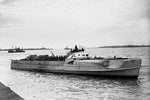Lucky13
Forum Mascot
Were these the best PT Boats and Destroyer class of WWII?
USN PT boats....


USS Kidd DD-661 a Fletcher class destroyer.

Which WWII navy had the best designed etc. PT boats and destroyers? RN? USN? Kriegsmarine? IJN?....
USN PT boats....

USS Kidd DD-661 a Fletcher class destroyer.
Which WWII navy had the best designed etc. PT boats and destroyers? RN? USN? Kriegsmarine? IJN?....

